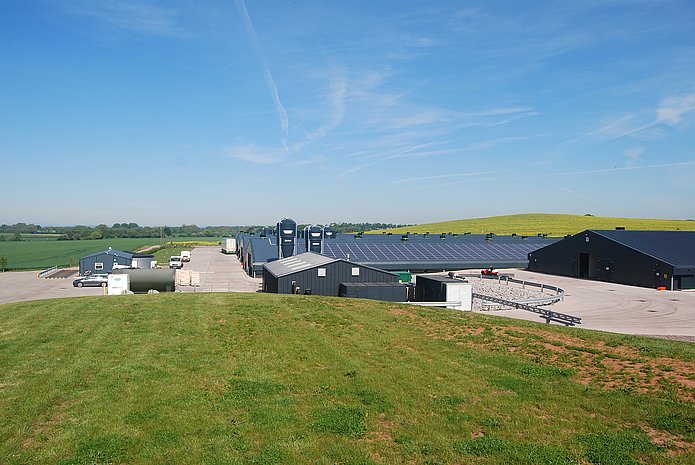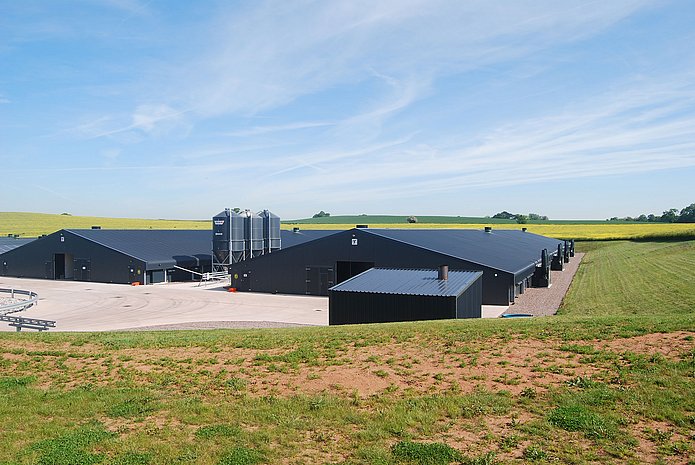Best use of resources
Timmis Farms Ltd (GB)
A flexible approach and complementary arable and poultry businesses has allowed H. Timmis Farms Ltd to expand, retain well-trained staff and make the most of its resources.
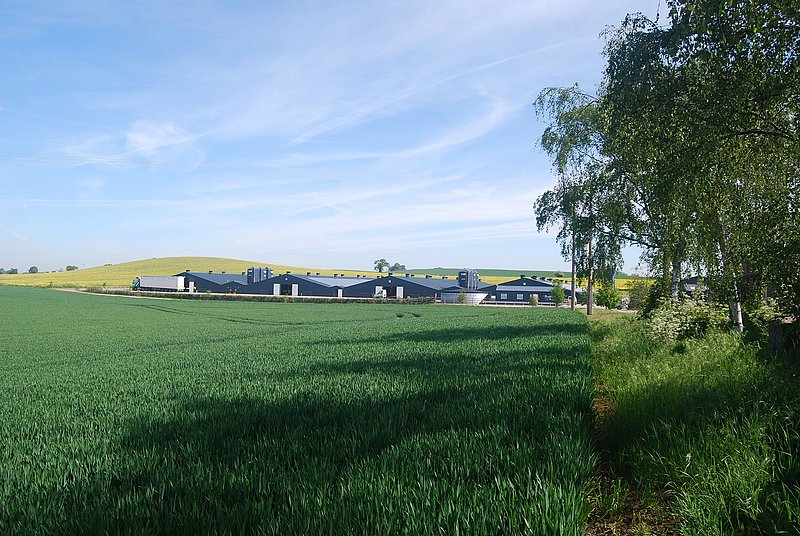
The Timmis family has been farming near Telford in Shropshire, England since 1927. Predominately an arable operation, H Timmis Farms Ltd currently has just under 3500 acres under cultivation but in the past four years has added a commercial poultry farming element to its business.
Owned and run by Rob Timmis, grandson of the original farm owner, the farm employs an arable manager, a poultry manager and three full-time staff. Arable manager, David Pugh, explains that although the two sides to the farm operate independently, they are quite complementary, keeping the flexible six-man team busy throughout the year.
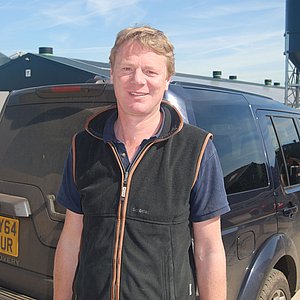
Rob Timmis took over the farm in 1997, which at that time was operated under contract farming agreement. He began to bring the farming of the land back in-house, as well as adding land to the farm. Contract farming was also offered and now around half the land is owned and the other half is farmed under contract.
The decision to add a poultry operation came as Rob Timmis looked to diversify and add a more consistent revenue stream. The farm now produces 297,000 broilers on a six-week cycle with an additional week to clean down the houses ready for the next batch.
Diversification and renewable energy
Initially, the plan was to use the chicken manure on the land. “We did use the chicken manure on the farm in the first couple of years, but the problem is it’s very high in nitrogen. We plant more than 90% winter crops and you don’t want the nitrogen in the winter, you need it in the spring, which meant the nitrogen was wasted.
Rob had been interested in adding broiler production since college. It offered consistent revenue and improved the farm’s cashflow with a predictable 7-week cycle. The adoption of renewable energy further enhanced the project. “Chickens require a lot of heat and by producing our own heat from renewable sources we are being paid to do it, via feed-in tariffs,” adds David.
The feed-in tariff is a government policy mechanism designed to increase investment in renewable energy production by offering long-term contracts to renewable energy producers. The Non-Domestic Renewable Heat Incentive (RHI) is a UK government environmental programme that provides financial incentives to increase the uptake of renewable heat by businesses.
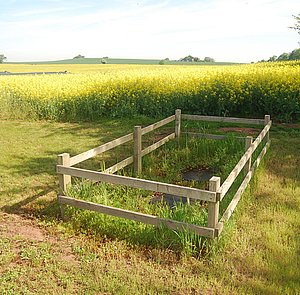
The farm uses ground-source energy with 100 bore holes descending 100m into the ground to extract heat from the soil. Water pumped into the bore holes is extracted two degrees warmer and heat exchangers use the energy to heat the chicken houses.
“We looked at other sources of renewable energy, such as an Anaerobic Digestion (AD) plant but we didn’t want to change the way we farm. We want to farm for food not for energy. Another choice was a biomass power plant but you’re still buying a commodity and exposed to changes in the market.”
Retaining staff
In addition to the five permanent members of staff, Timmis Farms also has a student from Harper Adams, a leading UK agricultural college, on a 14-month placement. As graduates themselves, Rob and David want to support the wider agricultural industry and understand the value to students of getting practical experience.
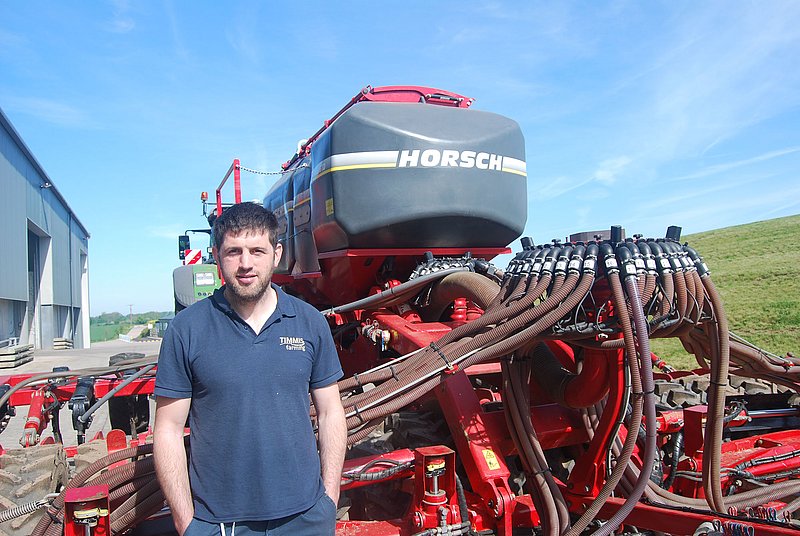
“As equipment and farming practices get more sophisticated, it’s hard to train up staff for a season and then lose them again. It’s a very busy week as we get ready for a poultry changeover, for example, but we’re able to put the whole team on it for a short time. “This flexibility means we can hang on to our well-trained staff and keep them busy throughout the year. Plus, we can move people about so I can share spraying duties with colleagues.”
Flexible farming system
Being able to adapt quickly to conditions and pressures is a key tenet at Timmis Farms and that extends to the arable farming practices too. The farm runs two drills, a 4m Pronto DC and 6m Focus TD, in addition to its 6m Joker RT cultivator and Sumo Quatro, which gives David both the capacity and flexibility he requires at cultivation and drilling.
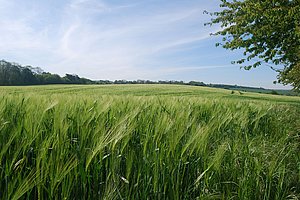
Winter wheat, barley and oilseed rape account for 90% of the farm’s crops with some winter oats. There are some spring varieties as well, but David explains this is to support crop rotation and managing grass weeds.
“We have medium to light soils across the farm and we’ve chosen winter crops for a more consistent yield. The problem with spring cropping is that if you get a dry year they don’t do very well, and we seem to be getting that more and more.”
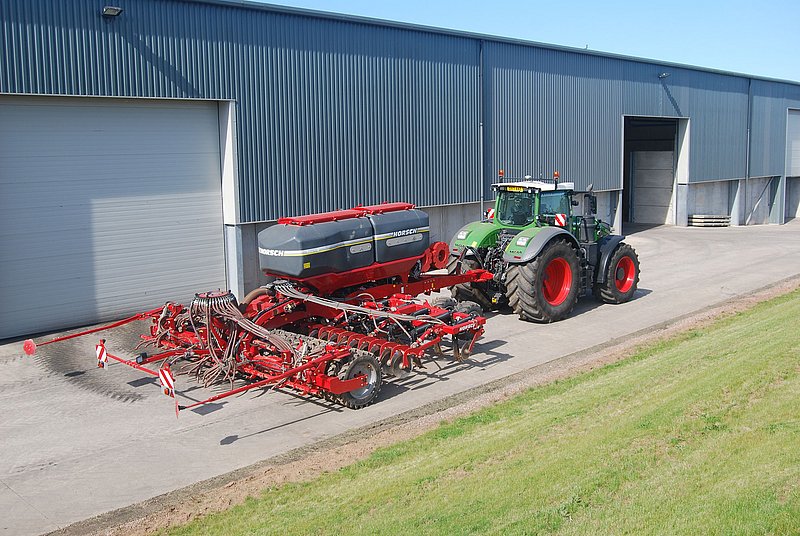
Having bought a farm eight years ago that had a blackgrass problem, the team immediately took a zero-tolerance policy. “By using rotation, late drilling and rogueing, we were able to get on top of the problem pretty quickly. You can never turn your back on it, but it can be managed.” A predominantly min-till regime across the farm is supplemented with ploughing where weed grasses need to be controlled. “We only plough on some of the lighter land ahead of winter barley for brome and rye grass control, and on one of our contract farms where we grow winter barley for seed. This provides us with a clean seedbed.”
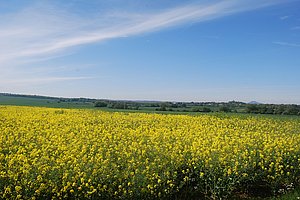
Coming out of rape into wheat, the ground is cultivated, rolled and drilled. “On the slightly heavier land we’ll have a pass with the Joker ahead of the drill to improve the seedbed.”
A 6m Joker RT and the subsoiler replaced a 4.4m Terrano, which was run for four years. “We needed to take out some compaction in places and required deeper cultivation. The Terrano worked well but we moved to a cultivator with a subsoiler where we needed it, and the Joker for the majority of the cultivation.” The Joker has been on the farm for a year now with good results. “It’s great at producing a stale seedbed and working to a uniform depth. It does a really good job of working over the top inch and keeping the weeds on the surface. The work rate is really good, and we can cover a lot of land.”
Getting the crops off to a good start
A Pronto DC provides the extra capacity required to complete the wheat drilling alongside the Focus TD. “This is our second Pronto. The first was a 6m model that we ran for around 8 years, our only drill at the time and a great machine that drilled all our wheat.”
At that time the OSR was broadcast off the back of a set of discs. “With the rising value of rape, we decided to drill it to get more consistent germination. We liked the Focus as it used the same coulters as the Pronto, which we knew provided a very consistent seed depth. It has 20 rows, each behind a leg that allows us to place DAP fertiliser for the seed ensuring great establishment for the crop.”
The Focus TD replaced the original Pronto as the farm’s only drill and is used to direct drill the oilseed rape, which makes up to 30% of farm’s cropping, and as a min-till drill for wheat. “We have two sets of coulters for the Focus, allowing us to drill on 30cm rows for the rape and 15cm rows for the wheat. Swapping between the two is a pretty straightforward process. It’s a very versatile drill and gives us lots of flexibility.”
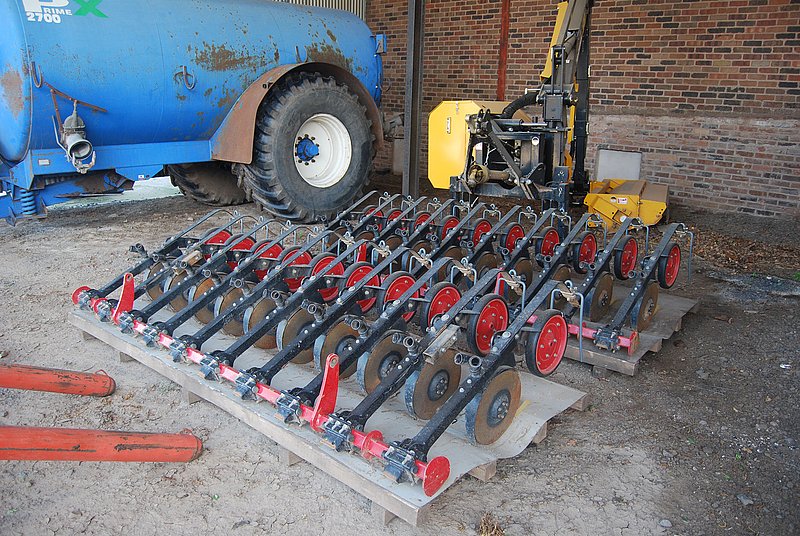
David accepts that the Focus cannot match the Pronto DC for drilling wheat but its capability in drilling rape and versatility makes it a good choice. “The discs of the Pronto do a brilliant cultivation job but I don’t think the Focus is too far behind.”
As Timmis Farms took on more land, a 4m Pronto was added to provide the extra wheat drilling capacity required alongside the Focus TD. “Good timing is one of our key aims. Getting the crops in at the right time and sprayed at the right time is becoming more critical. A good start is half the battle – drilling in poor conditions means they’re always behind, with patchy areas that never catch up.”
In addition to grain and fertiliser placement, David says variable seed rate is an important feature of the drills. Six years ago, SOYL, a crop production service provider in the UK, scanned the land to create detailed establishment maps. “Getting a more even coverage when growing the crops has certainly improved yield. We’ve removed thick areas that are fighting for resources and seen much better weed management, where a higher crop population is more competitive. Using the maps on the drill is simple and far more accurate than trying to deal with the problems manually.”
Timmis Farms are able to do all the drill maintenance themselves. “They’re very reliable machines and the great support we get from our local dealer, Edwards & Farmer, and the HORSCH UK area manager - we haven’t run into any issues. We change the bearings each year as a preventative measure, and we’ve run a HORSCH drill since 2006 so we know them very well.”
Going forward
Consideration is being given to a bigger drill for increased capacity. “The loss of use of an insecticide seed treatment this year means we’re going to have to delay our drilling slightly. A shorter drilling window for winter crop means we may need to increase our drilling capacity.” A large tractor that is not being fully utilised when wheat drilling comes gives David various options. “We’re looking at perhaps larger versions of what we have or a dedicated direct drill, such as the Avatar. With conditions changing each year, we don’t want to put all our eggs in one basket. We like to have options which is why the Focus is a great drill, as it can direct drill or go into min-till land.”
Timmis Farms currently sells all of its straw in a strong local market with many livestock farmers. “It’s tempting to just chop it and remove the additional issues, such as compaction from bale trailers, but straw is fetching a good price and that’s something we don’t want to give up. A direct drill is a bit of a one-trick pony, so you have less flexibility.”
David sees the potential loss of glyphosate as major factor of the future. “If we can’t use glyphosate in a few years’ time, then that’s going to be a complete change to how we approach things. Hopefully common sense will prevail.”
The common sense approach at Timmis Farms is to remain flexible and adaptable to changing circumstances, be it weather conditions, crop conditions or political conditions. The versatility of HORSCH equipment is helping with some of those issues.
